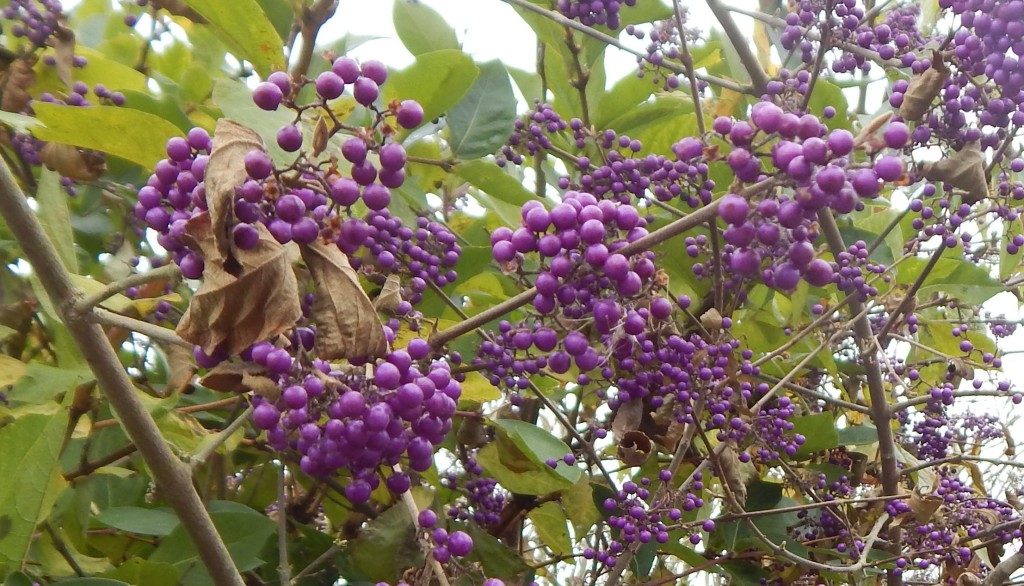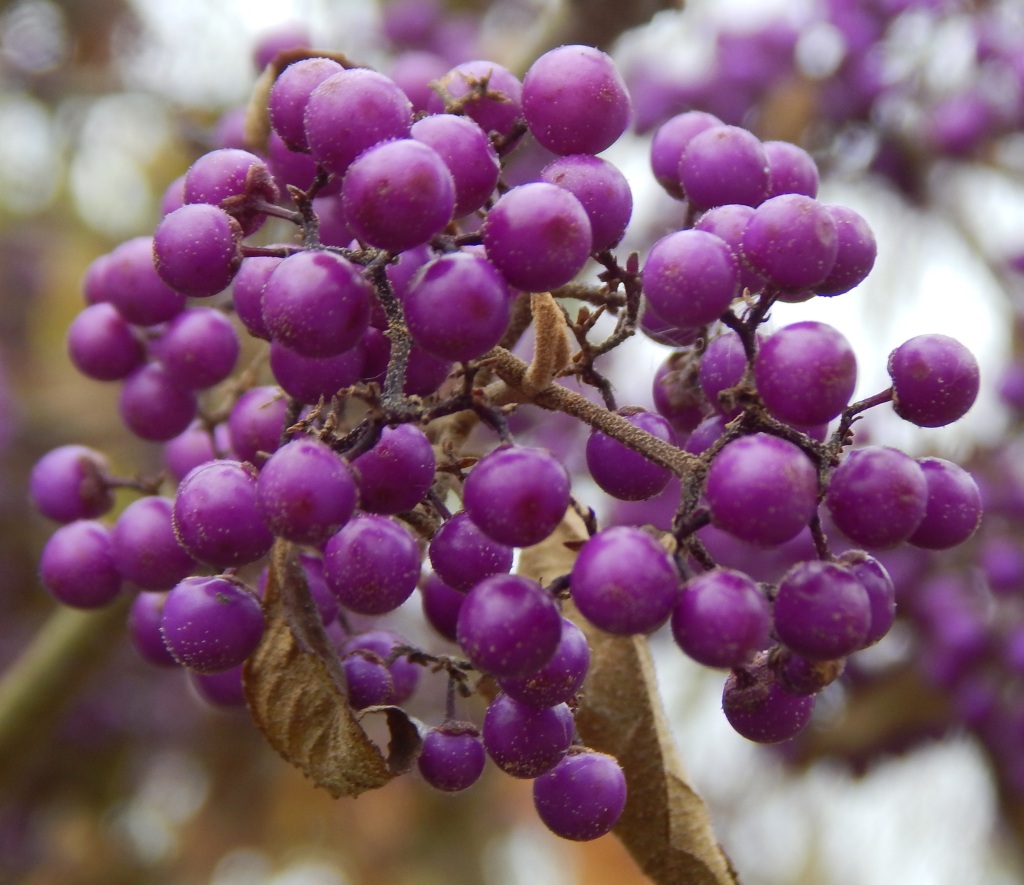
[063] Callicarpa dichotoma, Purple Beautyberry
Clerodendrum trichotomum. Harlequin Glorybower
Introduction
Callicarpa dichotoma, the Purple Beautyberry is a tree or shrub native to China and Japan, that is sometimes grown in gardens for its spectacular purple berries. It is sometimes called the Early Amethyst.
Clerodendrum trichotomum, the Harlequin Glorybower, from the same family, has even more spectacular fruits – bright turquoise berries surrounded by pink sepals. It is sometimes called the Peanut Butter Tree.
[Botany is full of specialized scientific definitions. To botanists, grapes, tomatoes, bananas, cucumbers, aubergines and chilli peppers are berries but many of the things we know as berries are not berries. The berries of these species are actually drupes, each one developed from a single carpel of a flower.]
Taxonomy
Kingdom – Plants
Division – Vascular Plants
Class – Angiosperms (Flowering Plants)
Order – Lamiales
Family – Lamiaceae (Mint and Sage)
Genus – Callicarpa, Clerodendrum
Scientific Name – Callicarpa dichotoma, Clerodendrum trichotomum
Name
I think the Common Names are fairly self-evident.
Calli-carpa looks like an attempt by a botanist to render beauty-berry in Latinized Greek. ‘Calli’ certainly means beautiful and ‘carpa,’ relates to the botanical carpel that becomes the colourful fruit.
Clero-dendrum tricho-tomum, from the Greek means chance-tree triple-branched. Don’t ask me why.
Description
Both species are deciduous shrubs that can be grown as decorative hedges.
All I can say about Callicarpa dichotoma is that its fruits are small bright purple berries, growing in clusters. That is the main reason it is grown.


Clerodendrum trichotomum is a fairly close relative. Its leaves produce the scent of peanuts when crushed.
Its fruits are white within a green calyx, turning to a bright blue inside a pink surround.


Habitat and use
Callicarpa dichotoma is native to China, Korea, Vietnam and Japan.
Its fruits of are useful to wildlife but are bitter and not fit for human consumption.
Clerodendrum trichotomum has a slightly larger native area including the Phillipines.
Both species are cultivated in England and elsewhere for their appearance.
Other Notes
It may not surprise you but I have seen both at Slimbridge WWT. As well as lakes and hides, it has excellent gardens and provides mini-habitats for butterflies, damselflies and pond life.
I have also seen the Purple Beautyberry in a few local gardens.
See also
You may meet other species from Lamiaceae but none of my other species have quite such spectacular fruits.
P.S. From a late visit to Westonbirt Arboretum here are the flowers of the Harlequin Glorybower.


